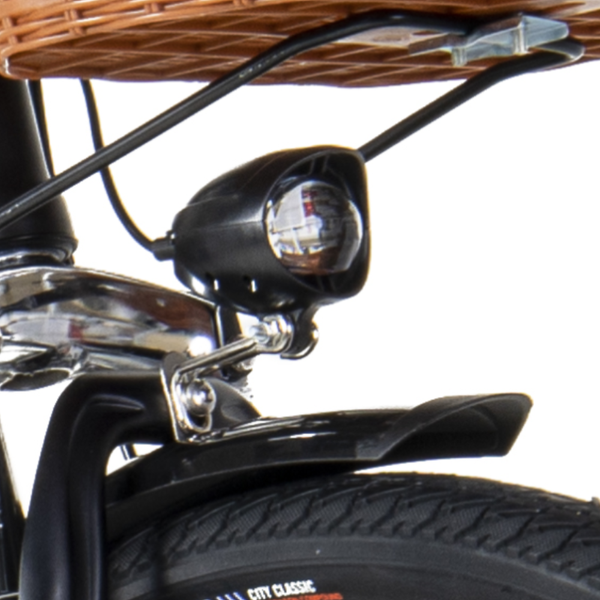
Three tips for riding an electric bike in the dark
Obviously, winter is coming and the days will get shorter, making your usual ride more likely to encounter darker scenarios.
Here are a few tips to keep things safe and comfortable while riding at night.
1. Pick a bright headlight

A headlight, taillight, and integrated brake light are all must-haves while riding at night, early in the morning, or in foggy conditions. This combination not only illuminates your way, but it also alerts drivers to your presence.
When it comes to choosing your headlight, you may believe that brighter is better, but this is not the case.
Some lights on the market give far over a thousand lumens (the conventional measurement for brightness), but they are unlikely to be useful for your riding style. For example, some mountain bike headlights provide around 4200 lumens, which is 6 times the lumens of a vehicle headlight. This is great for romping about the woods at night, but it's not practical for street riding.
If you go too bright, you risk blinding approaching cars, which might place you in a dangerous scenario. A high lumen output also makes it difficult to notice the brake lights and turn signals on the cars surrounding you.
Our C6 e-bike includes a proper LED headlight that meets industry requirements and is designed to provide ample visibility.
2. Dress up you and your e-bike (in the dark)
You're used to folks noticing your bike during the day. In our experience, they will most likely stop you to ask you a slew of questions. However, when riding at night, you can't rely on your bike's coolness to attract attention. To be noticed, you must go out of your way.
To begin, this entails wearing luminous apparel to capture the attention of vehicles. This can be a neon jacket or a bright helmet, but according to a recent research from the University of Clemson, if you really want to be spotted, you should also wear luminous pants or leggings.
This is due to the fact that drivers are built to detect motion on the road, and when you pedal, your legs are moving. With that in mind, if your lower body is coated in reflective material, you will stand out substantially more.
Check that your bike is also ready for optimum visibility. Maintain your headlight, install a taillight, and consider coating the frame and fenders with reflective safety stickers.
3. Ride on the defense.
According to the National Highway Traffic Safety Administration's most recent data, 75 percent of bicycle fatalities involving motor vehicles occur in urban areas, with 27 percent occurring at traffic intersections.
So, even if you're riding in the city, you can't relax your guard when it comes to potential hazards.
You must ride without other road users seeing you, no matter how big or mean your lights are, or how shiny your cool new fully reflective jacket is.
It all comes down to plain sense. Take the extra time to come to a complete stop at junctions and look both ways. If you're driving down a small street and see a car coming up behind you, consider pulling over to allow that automobile pass. If you listen to a lot of music, leave your Bluetooth speaker at home so you can concentrate on the road.
A solid defense is also to plan the best route. Go where vehicles expect to see you: bike routes, bike lanes, and other locations where you frequently ride. The last thing you want is for passing motorists to be astonished by your presence as they round the curve.
Remember that you can't see very well at night, so slow down, look for potholes, and be cautious.
And, especially when you're just starting out, stay within your comfort zone. Being careful does not imply being terrified of the dark.